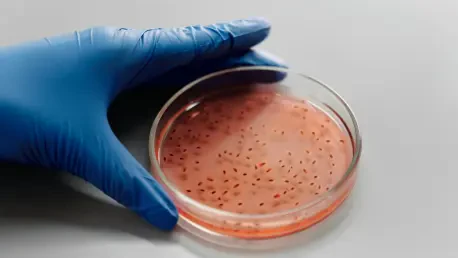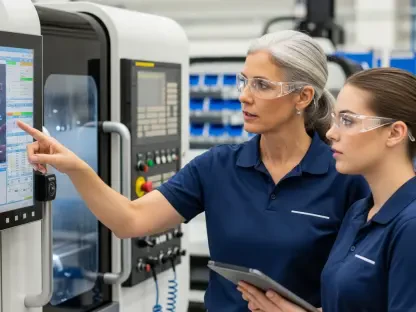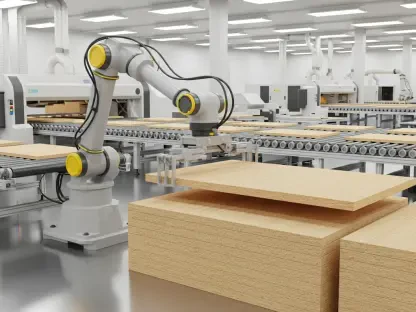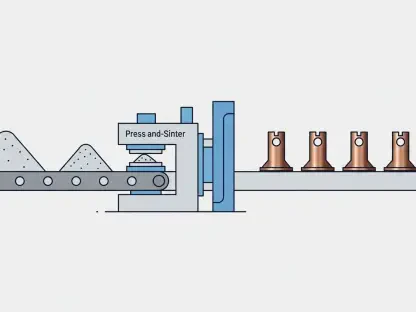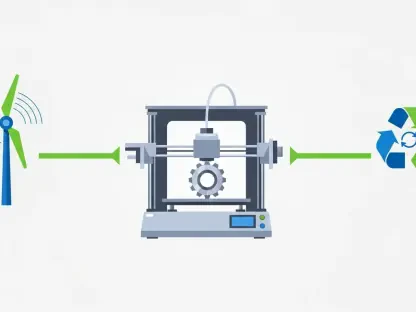I’m thrilled to sit down with Kwame Zaire, a renowned manufacturing expert with deep expertise in electronics, equipment, and production management. With a passion for predictive maintenance, quality, and safety, Kwame has become a thought leader in the pharmaceutical outsourcing space, particularly in the realm of Contract Development and Manufacturing Organizations (CDMOs). Today, we’ll explore the promising growth outlook for CDMOs in 2026, key insights from industry conferences, current challenges in manufacturing capacity, pricing dynamics, and regional trends shaping the future of this vital sector. Let’s dive into a conversation that promises to shed light on where the industry is headed and what’s driving its momentum.
How do you see the pharmaceutical outsourcing sector, particularly CDMOs, gearing up for significant growth by 2026?
I’m really optimistic about the trajectory for CDMOs heading into 2026. The industry has faced its share of hurdles recently, but there’s a clear light at the end of the tunnel. Analysts and industry insiders alike are pointing to a rebound driven by robust demand for outsourced manufacturing, especially in biologics and complex small molecule production. What’s fueling this is a combination of strong drug approvals over the past few years and a growing trend among biopharma companies to outsource more of their operations to focus on core R&D. I think we’re also seeing a healthier outlook for drug sales, which only adds to the momentum for CDMOs.
What stood out to you from recent industry gatherings like the CPHI Frankfurt conference regarding the state of CDMOs?
The CPHI Frankfurt conference was a goldmine of insights. One of the biggest takeaways for me was the unanimous agreement among companies that capacity, especially for large-scale biologics and aseptic fill-finish services, is still lagging behind demand. I had the chance to speak with numerous firms, and their confidence in the sector’s growth was palpable. It reinforced my view that we’re on the cusp of a significant expansion phase, as both CDMOs and large pharma are investing heavily to bridge that capacity gap. The energy at the event was electric, with a shared sense of opportunity.
Why do you think there’s still a shortage of capacity for large-scale biologics manufacturing, and what’s being done about it?
The shortage in large-scale biologics manufacturing capacity comes down to a few key factors. First, the surge in demand for biologics, including antibody-drug conjugates and GLP-1 drugs, has outpaced the industry’s ability to build and scale facilities. These are complex processes requiring specialized equipment and expertise, which take time to establish. Additionally, the shift toward user-friendly formats like prefilled syringes adds pressure on aseptic fill-finish capabilities. On the flip side, I’m seeing CDMOs and large pharma announcing major capacity expansions, which should start addressing these gaps in the coming years, especially as projects announced recently come online.
How is the current demand for aseptic fill-finish services shaping the CDMO landscape?
Demand for aseptic fill-finish services is absolutely reshaping the CDMO landscape right now. With the biopharma industry moving toward formats like cartridges and vials for better patient convenience, there’s an unprecedented need for sterile manufacturing capabilities. This isn’t just a niche area—it’s becoming a cornerstone of growth for many CDMOs. The challenge is that setting up these facilities requires significant investment and regulatory compliance, so not every player can meet the demand overnight. It’s creating a competitive edge for those who can deliver high-quality, reliable services in this space.
Looking ahead to 2025, what’s behind the expectation of a more competitive pricing environment for CDMOs?
I think the anticipation of a more competitive pricing environment in 2025 stems from a few dynamics. For one, as more CDMOs expand capacity and enter high-demand areas, there’s naturally going to be more competition for contracts. At the same time, input costs like wages and energy are stabilizing, which gives CDMOs some breathing room to adjust pricing without sacrificing margins too much. However, biopharma customers are still prioritizing quality and reliability—especially for U.S.-based manufacturing—so I don’t see pricing becoming a race to the bottom. It’s more about striking a balance between cost and value.
Why are regions like the U.S. and China positioned for the strongest growth in the CDMO sector?
The U.S. and China are poised for standout growth in the CDMO sector due to a mix of strategic advantages. In the U.S., there’s a huge push for domestic manufacturing, driven by customer demand for reliability and quality, as well as policy considerations like potential tariffs. This is especially true for high-demand areas like biologics and sterile filling. China, on the other hand, offers cost advantages and rapidly expanding capabilities in complex manufacturing. Both regions are seeing spikes in demand for specialized services like antibody-drug conjugates and monoclonal antibodies, which positions them as leaders in capturing outsourcing trends over the next few years.
What specific areas of manufacturing do you see driving demand in these high-growth regions?
In both the U.S. and China, I see a few key areas fueling demand. Antibody-drug conjugates, or ADCs, are a big one—these are highly specialized and require advanced manufacturing setups. Monoclonal antibodies and proteolysis targeting chimeras are also gaining traction, especially as biopharma pipelines grow. Sterile filling, particularly for user-friendly formats like prefilled syringes, is another huge driver. Beyond biologics, there’s also an upbeat outlook for small molecule manufacturing, especially for complex processes like highly potent compounds and spray drying to improve drug solubility. These areas are where I expect to see the most action.
How do you think regional differences will influence the strategies of CDMOs in the coming years?
Regional differences are going to play a big role in shaping CDMO strategies. In the U.S., for instance, the focus will likely be on building out high-quality, compliant capacity to meet the surge in demand for domestic production—especially as customers prioritize supply chain security. In China, the emphasis might lean more toward cost-effective scaling and capturing a larger share of global outsourcing. These differences mean CDMOs will need tailored approaches, whether it’s investing in U.S. facilities for premium services or leveraging China’s manufacturing base for volume. It’s not a one-size-fits-all game, and adaptability will be key.
What’s your forecast for the CDMO industry as we approach 2026 and beyond?
Looking toward 2026 and beyond, I’m incredibly bullish on the CDMO industry. I expect continued growth driven by persistent demand for biologics, sterile manufacturing, and complex small molecule services. The capacity expansions we’re seeing now will start to pay off, but I think demand will still outstrip supply in some areas, keeping the pressure on to innovate and scale. Regional trends, particularly in the U.S. and China, will create both opportunities and challenges, and I believe the companies that can balance quality, cost, and geographic strategy will come out on top. It’s an exciting time, and I anticipate the sector will play an even bigger role in the global biopharma ecosystem.
